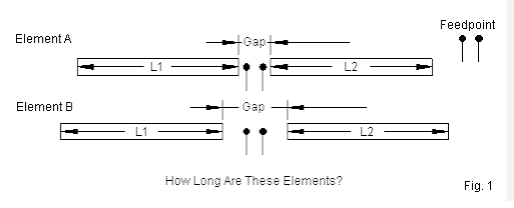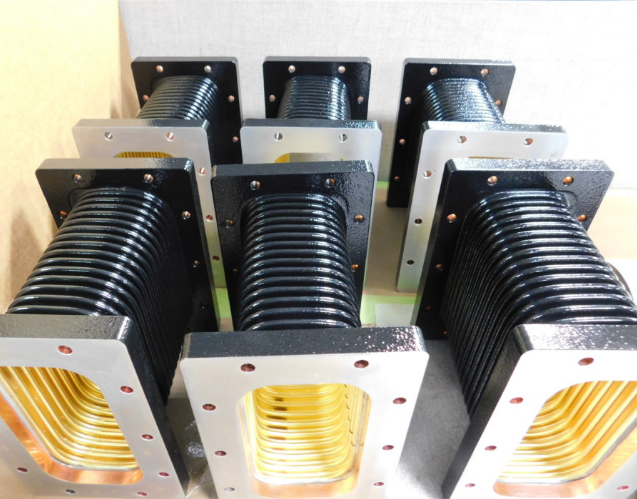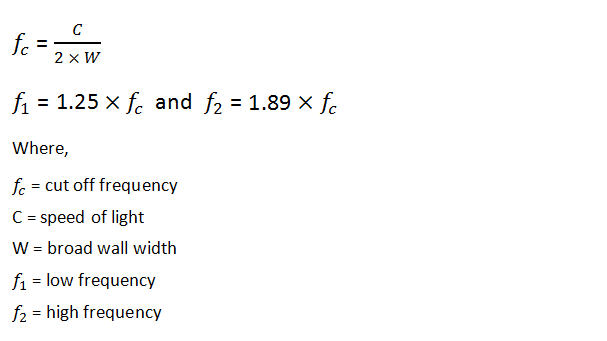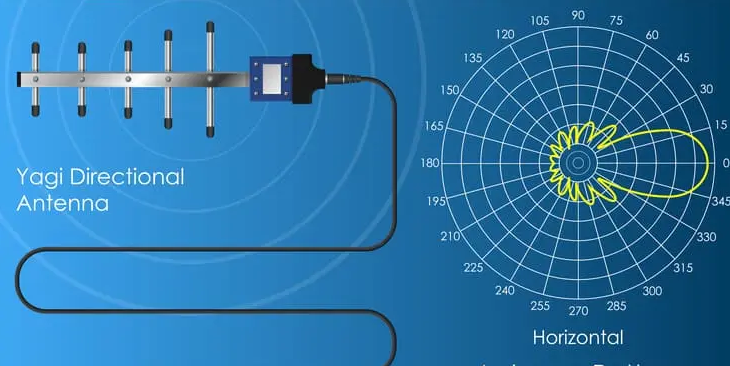The antenna feed point is where the transmission line connects, crucial for effective energy transfer and radiation.
Table of Contents
Dipole Antenna
A dipole antenna is an antenna that has its feed point in the center, where the two conductive elements meet. This linked position has made the antenna one of the most preferred in radio and wireless communications, since it ensures a balanced signal transmission and reception. Therefore, the antenna is particularly useful in the performance of amateur radio operators and in general broadcasting. One case where the dipole antenna is applicable is the home radio. A simple dipole antenna is used by many enthusiasts to boost the signal reception of their FM and shortwave radio stations from home.
The feed point, one of the significant points to note, should be at an appropriate height for reception, typically half of the frequency wavelength. For example, if the dipole is designed to give a frequency of 100 MHz, the corresponding wavelength is approximately 3 meters. Hence, an appropriate feed point of the antenna is 1.5 meters above the ground, which gives the antenna the best line-of-sight of reception . In addition, the efficiency of the antenna is highly dependent on accuracy in the feed point. Thus, inaccuracy would result in an increased SWR with an ideal SWR for a typical dipole being 1.5:1. Its attainment involves measurement and adjustment of the length of the elements and the placement of the feed point. Often, the cost of initiating such an antenna varies, but a beginner’s project would typically range from $30 to $100.
However, for extremely weather proof materials, a minimum budget might push to over $200 with the higher end of the range having a substantial variety of weather-resistant materials and hardware to make it adequately durable and reliable in industrial environment. Concerning power, it would allow a simple home-made antenna to operate on a power output of between 100 and 300 watts, which is enough for amateur radio. However, a commercial-grade dipole can operate between several kilowatts since it is for professional broadcasting. The kind of material used in making the antenna affects its performance in many ways. For instance, if one uses heavy and insulated copper wire for the elements, the antenna becomes resistant to extreme weather conditions. Consequently, the design would not have aged for so long . On the contrary, thin or uninsulated wire are short-lived.

Yagi Antenna
The Yagi antenna is known for its directionality, and the feed point is usually placed at the driven element at the back end of the antenna’s boom. This is done in order to channel the antenna’s power in one direction and maximize the strength of reception and transmission. One of the most common uses of the Yagi antenna in real life is its usage in open, rural areas for reception of a TV signal. While such use varies, the user can install an antenna a few miles from the nearest television broadcast station . In this case, the user should install the Yagi antenna at an appropriate angle and height, usually some 20 feet from the surface . This is high enough to provide reception over the curve of the horizon and is sometimes enough to avoid interference caused by buildings and vegetation. The closer the user is to the nearest station, however, the better performance will be achieved by placing the antenna high enough to avoid obstacles. In addition, the feed point determines the impedance of the antenna and TV set connection. The majority of television broadcast applications use a 75 ohm line, making the impedance 75 ohms as well . An appropriate match is crucial in order to minimize loss of signal, and this occurs when the antenna can match the system with the proper threshold impedances.
When it comes to purchasing a Yagi antenna, the advantage of home use is its relatively low cost. A more basic model will range from $40 to $100 depending on the specifications, while a similarly built model might go up to $200, designed for a more harsh environment and weather . In this case, more durable materials are used to withstand the elements and extend the lifespan of the antenna. During transmission, one does not commonly require a high-power load, and most Yagi antennas are commonly used for receiving rather than sending the signals. For those that are used for amateur radio, the amount of power they can handle usually ranges from 100 watts to some 2,000 watts. In addition, one should opt for sturdy materials such as aluminum for the construction of the elements of the silver and the boom on which the elements are mounted. This minimizes the antennas’ maintenance needs and extends its lifespan.
Monopole Antenna
Monopole antenna is frequently encountered in mobile and radio communication systems because of its simple design and omnidirectional pattern. The feed point of a monopole antenna is grounded to the base of the structure, influencing the antenna’s overall performance through radiation pattern and impedance matching. In cell phone towers, for example, a monopole antenna is typically employed to cover a specific radius depending on the antenna’s height and frequency of operation.
The higher the antenna, the larger the radius of coverage. In light of the foregoing, a monopole antenna 15 meters high is commonly used to cover a small neighborhood with a substantial increase in signal quality and strength, as compared to the 1.5-meter mobile phone. This is largely because at such a high frequency, there will be no any obstacle to the cell phone because the antenna is high above the ground, and the signals will uniformly be distributed. For monopole antennas, impedance matching is also important since it has an impedance of about 50 ohms. This allows power to be transferred in a manner that minimizes reflections while maintaining maximum output from the transmitter.
The optimal impedance of the monopole antenna is 50 + j20 ohms, but the impedance depends on the transmission line, and monopoles are designed to ensure the transmission line and the antenna are closely matched. A monopole antenna can cost over $1,000, but the typical cost of installing monopole antennas can vary between $1,000 and $5,000, which includes the antennae elements, grounding, cabling, etc. For home applications, a smaller monopole can also be developed at a relatively low cost of less than $100. The material also plays a significant role in the life of a monopole antenna. It is advisable to use high-cost materials such as stainless steel or galvanized steel in corrosive environments, which will last more than 20 years with very little maintenance.







